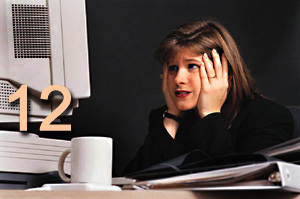Film, Radio and TV - 12 |

Film Structure
Script writing follows certain conventions (ways of doing things). If you don't understand these, your credibility in the film business will be limited, especially when you try to communicate your ideas to others in the business. In this module we can't hope to cover everything about film structure--we'll leave that to the many books on the subject--but we can point out some essentials. Before you get too far into your (or someone else's) film proposal, you need to make sure you understand the target audience--the people who you expect to entice into paying to see your film. Remember, a large percent of people who buy tickets at the box office are between the ages of 13 and 25. Although you don't need to limit your production to this group, to feature stars or story lines that don't interest younger audiences might be a mistake. At the same time, as a greater percentage of the population moves into the above-50 category, we
may see more and more films designed appeal to this age group. |
The most important parts of your film are the beginning and ending. Since most films end up on television (where they will recoup a large percentage of their production costs), you need to keep in mind some TV guidelines for structure. First, this means that you should quickly capture audience attention before viewers are tempted to consider other, more interesting, options. To leave a good impression with your audience, your film must also have a satisfying ending. To a large measure this is the impression that your audience will leave the theater with--and think about when (and if) they recommend your film to others. In between, of course, you have to keep audience interest from drifting by varying pace and emotional content.
As you go through the script, think of yourself as watching the film, and visualize exactly what's going on at each moment. It's said that the great music composers can hear each instrument in their heads as they write their music. In the same way, effective scriptwriters visualize scenes as they write their scripts. In establishing the pace of the production there should not be long, slow periods, or even long periods of fast pacing. Either will tire an audience. In some films the technique of using flashbacks (momentarily cutting back to earlier events) and presenting parallel stories (two or more related dramatic events running concurrently), adds variety and stimulates interest. But, whatever you do, make sure you present the materials in a
Such things as casting (selecting the main characters), music, camera angles, etc., are best left to the producer or director--although there's no law against making a few suggestions. For those who like to critically examine film and video productions In the next module we'll look at some basic film script terminology. |
To
next module To
index © 1996 - 2004, All Rights Reserved. |

 way that holds the attention and interest of your audience. You do this by:
way that holds the attention and interest of your audience. You do this by: